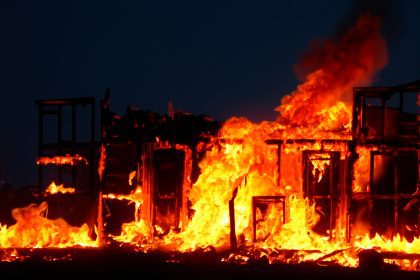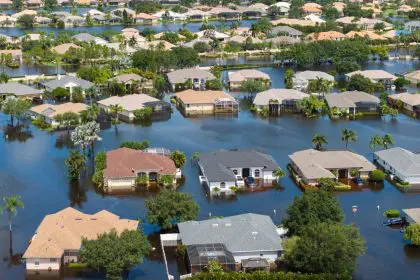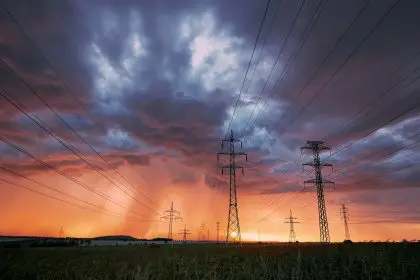North Carolina’s western mountains, still healing from Hurricane Helene’s devastation in September 2024, faced a new crisis in early 2025 as wildfires scorched thousands of acres, forcing evacuations in counties like Polk and McDowell. Fueled by dry conditions, high winds, and debris from the hurricane, fires like the Table Rock Complex and Turkey Cove have burned over 10,000 acres, making the Table Rock fire the largest in Upstate history. Despite the grim toll, communities are rallying with resilience, from emergency response to rebuilding efforts. Here are five ways these wildfires are impacting North Carolina and sparking hope for recovery in 2025.
1. Mandatory evacuations disrupt lives
In Polk County, about 80 miles west of Charlotte, mandatory evacuation orders were issued in March 2025 for 165 properties as the Black Cove, Deep Woods, and Fish Hook fires raged across nearly 6,000 acres. The fires, burning uncontained for days, threatened towns like Tryon and Saluda, forcing families to flee with little notice. In McDowell County, a wildfire near Turkey Cove in April prompted similar orders, with residents along U.S. Highway 70 evacuated as flames spread rapidly. Thick smoke and blocked roads heightened the urgency, leaving many to seek shelter in community centers or with relatives. These displacements, while temporary, have disrupted daily routines, with some families still unable to return due to ongoing fire risks, underscoring the emotional and logistical toll of the crisis.
2. Firefighting efforts battle harsh conditions
Firefighters from across the U.S., including teams from Oregon and California, are working tirelessly to contain the wildfires, but conditions remain daunting. In Polk County, the North Carolina Forest Service reported that the Black Cove and Deep Woods fires reached over 10% containment by late March, aided by helicopters dropping water and crews digging firebreaks. However, millions of fallen trees from Hurricane Helene, covering 822,000 acres of debris, fuel the flames and block access to logging roads, slowing progress. In McDowell County, dry vegetation and gusty winds up to 30 mph have complicated efforts to control the Turkey Cove fire. Despite these challenges, over 250 personnel and air support, including Black Hawk helicopters, are making gains, offering hope for containment in 2025.
3. Air quality alerts protect vulnerable residents
Heavy smoke from the wildfires has blanketed western North Carolina, prompting serious health concerns. Polk County issued a Code Red air quality alert in March, warning that prolonged exposure could harm everyone, especially children, older adults, and those with lung conditions. McDowell and nearby counties like Henderson and Rutherford faced Code Orange alerts, advising sensitive groups to avoid outdoor activity. Schools canceled outdoor sports, and community centers distributed masks to protect residents from soot and dust. The poor air quality, worsened by low humidity and minimal rainfall—only 2.3 inches in 2025 so far—has forced families to stay indoors, disrupting normal life but highlighting the community’s commitment to safety as they navigate this environmental crisis.
4. Community support strengthens recovery
North Carolina’s residents are showing remarkable solidarity in the face of the wildfires. In Polk and McDowell Counties, volunteers have set up shelters, providing food, blankets, and temporary housing for evacuees. Local businesses are donating supplies, while churches host donation drives to support firefighters and displaced families. In Tryon, community members organized meal deliveries for first responders, and in Marion, residents are raising funds to repair homes damaged by smoke and embers. The outpouring of support echoes the resilience seen after Hurricane Helene, with neighbors helping neighbors to rebuild. These efforts, though born of hardship, are fostering a sense of unity and determination to recover, with plans to sustain aid through 2025.
5. Environmental recovery plans take shape
The wildfires have spurred urgent calls for long-term environmental recovery in North Carolina. The debris from Hurricane Helene, which damaged 5,000 miles of state roads and countless private paths, has intensified the fires’ spread, prompting state officials to prioritize cleanup. In 2025, the North Carolina Forest Service is working with federal agencies to clear fallen trees and restore forest access, reducing future fire risks. Community groups are advocating for reforestation and sustainable land management to prevent erosion and rebuild ecosystems. These initiatives, supported by a federal grant approved in March, aim to heal the land and protect communities like Polk and McDowell from future disasters, offering a path toward resilience despite the current crisis.
Why this matters for North Carolina
The wildfires’ toll goes beyond scorched land—four homes have been destroyed, and air quality remains a health hazard, with Polk County’s fires alone burning over 10,000 acres. Coming just months after Hurricane Helene, which killed 106 in North Carolina and caused $78.7 billion in damage, these fires test a region already stretched thin. The state’s spring wildfire season, combined with a moderate drought and only two-thirds of normal rainfall since September, has created a perfect storm. Yet, the response—hundreds of firefighters, community donations, and federal aid—shows a refusal to give up. Critically, the reliance on debris as fuel raises questions about disaster preparedness, as unaddressed hurricane damage amplified the crisis. Long-term solutions, like better forest management, are essential to prevent recurrence.
How residents can help
North Carolinians can make a difference in the wildfire response. Volunteering at shelters in Polk or McDowell Counties provides direct support for evacuees, while donating to local fire departments or nonprofits aids recovery efforts. Residents can stay informed by signing up for emergency alerts, such as texting AlertHC to 226787 in Henderson County, or monitoring the North Carolina Forest Service’s wildfire map. Avoiding outdoor burning, per the statewide ban, is critical to prevent new fires. For those affected by smoke, limiting outdoor activity and using air purifiers can protect health. Every action, from delivering meals to advocating for debris cleanup, strengthens the community’s resolve to overcome this crisis in 2025.
Looking toward a resilient 2025
North Carolina’s wildfires have brought hardship, but they’ve also revealed the strength of its people. From Polk County’s evacuation zones to McDowell’s Turkey Cove, communities are facing the crisis with courage, supported by firefighters, volunteers, and federal resources. The Table Rock Complex Fire, now a historic blaze, underscores the need for systemic changes, like clearing hurricane debris and addressing drought-driven fire risks. As rain arrives in April, offering some relief, the path to recovery is clear: sustained community action, environmental restoration, and smarter disaster planning. By working together, North Carolinians are not just surviving—they’re building a future where their mountains remain a place of beauty and safety in 2025 and beyond.















